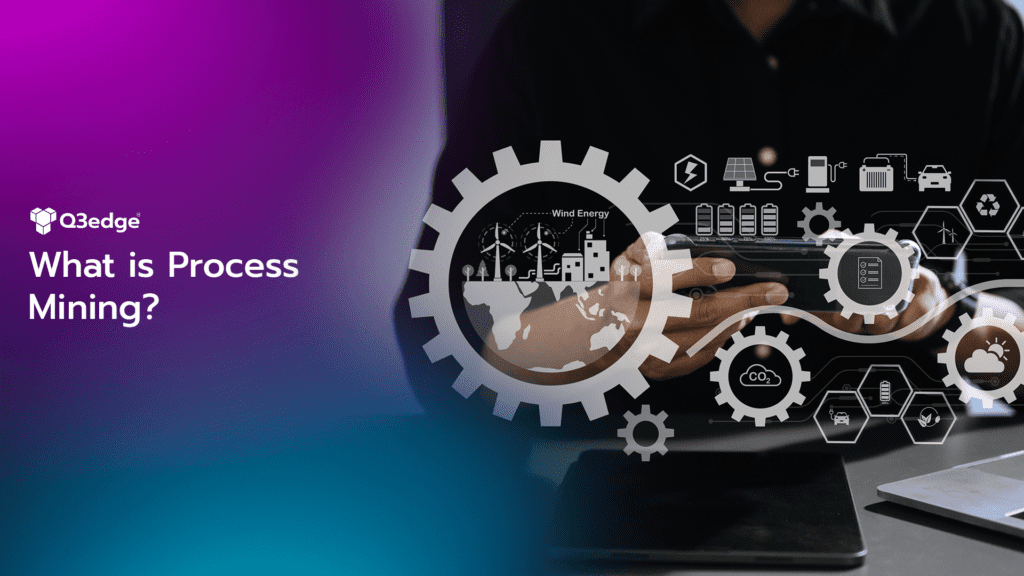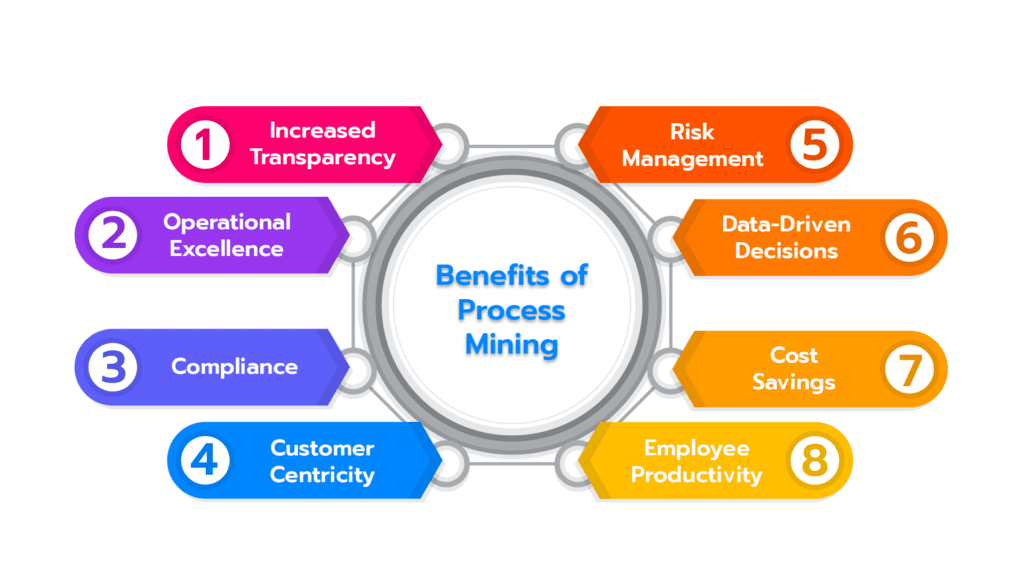What is Process Mining? A Comprehensive Beginner’s Guide

If you are thinking about how you can gain insights into business processes, then process mining has to be the way to go. This approach has helped organizations to analyze business processes and get closer to any inefficiencies and bottlenecks. There is a lot more to it, and here we are, discussing every aspect of it in detail. So, if you have just started with your business and have no understanding of process mapping, let’s get started now!
Let’s Know What is Process Mining, Benefits & Tools
Origins of Process Mining
The roots of Process Mining can be traced back to the 1990s with the advent of Process-Aware Information Systems (PAIS). PAIS were early enterprise systems that executed business processes through standard process definition languages while generating logs of tasks, events, and related context during runtime. Independently, Data Mining techniques were evolving that could extract patterns from large datasets.
In the early 2000s, researchers in Process Mining combined concepts from PAIS and Data Mining to develop techniques that analyzed event logs and extracted information about natural processes. Process Mining provided objective evidence for process redesign from empirical data rather than assumptions.
In 2011, Process Mining was established as an independent research field, and the Process Mining Manifesto standardized its components and scope. Today, Process Mining has emerged as an essential business intelligence discipline thanks to the availability of sophisticated tools and mature event data in organizations.
Why is Process Mining Important?
Several factors make Process Mining crucial in today’s digital business landscape:
- Processes are continually changing but often undocumented—Process Mining helps analyze actual processes in operation rather than relying on outdated documentation.
- Pressure to increase transparency, performance, and compliance—Process Mining revealed facts to help make informed decisions for improvements.
- Availability of event logs from diverse systems— today’s information systems automatically generate detailed logs that can be leveraged for Process Mining.
- Need for real-time operational intelligence—Process Mining delivers actionable insights faster based on live event streams to tackle issues proactively.
- Growing focus on customer centricity—Techniques like Process Mining can analyze touchpoints and handoffs to enhance the experience from a customer lens.
Thus, with its emphasis on objective data analysis and actionable recommendations, Process Mining has become an inevitable business discipline helping organizations optimize operations and stay compliant in constantly changing conditions.
Components of Process Mining
Three fundamental components build the process mining capability:
Event Logs
Detailed records generated from information systems automatically capture every relevant event/transaction with its originator, timestamp, case identifier, etc. These logs act as raw material for Mining.
Process Mining Algorithms
Intelligent algorithms analyze event logs, discover inter-relations between events, and construct process models depicting flow, performance, bottlenecks, etc.
Process Mining Tool
A specialized software tool that allows the extraction of event logs from diverse systems applies mining algorithms and provides visualizations, simulation, conformance checking, and enhancement capabilities for process intelligence.
These components work together harmoniously. Event logs serve as empirical facts for algorithms, while tools facilitate the application of algorithms and delivery of results in actionable form. Let’s look deeper into each component.
1. Event Logs
For Process Mining Services, event logs refer to transaction-level records of business processes from information systems automatically captured through application programming interfaces (APIs). The quality, structure, and completeness of event logs directly impact mining outcomes. Some key characteristics of good-quality logs are:
- Detailed recording of events with timestamps up to milliseconds of precision
- Accurate case/process instance identifiers for grouping related events
- Clear origin (user, system, etc.) for each event
- Standardized structure/schema for log extraction
- Complete recording of all events relevant to the process
With these attributes, event logs serve as a single source of truth for Process Mining algorithms to analyze what actually happened in reality objectively.
2. Process Mining Algorithms
Process mining algorithms are the core intelligence that interprets event logs and patterns of inter-relations between process steps and reconstructs actual process models. Some critical types of algorithms are:
- Process Discovery: Construction of process model from event log without using any a-priori information. Techniques include the Alpha algorithm.
- Conformance Checking: Compare an existing process model with an event log and detect deviations to measure conformance level.
- Enhancement/Extension: Enrich an existing process model based on additional event data like performance, decisions, and organizational perspectives.
- Decomposition: Ability to break down a single case into subprocesses or parallel branches in the process flow.
- Clustering: Group similar cases together to analyze variability.
- Causal Relationships: Determine dependencies and infer the effect of one event on another based on log sequence, timing, etc.
The choice of algorithm depends on the specific mining goal, such as analysis, redesign, or optimization. Algorithms are continuously evolving to incorporate new analytical techniques.
3. Process Mining Tools
Process mining tools act as the interface between event logs, mining algorithms, and end users to provide a complete life cycle of process intelligence. Critical elements of tools include:
- Log Pre-processing: Extract logs from diverse systems, transform inconsistent structures to standardized forms, and filter noisy or irrelevant data.
- Process Discovery: Automatically apply appropriate algorithms on pre-processed logs to retrieve process models without user input.
- Model Comparison: Overlay discovered models on existing a-priori models to identify divergence points.
- Visualization: Ability to render process models and analytics in interactive visual formats like flow diagrams, dashboards, performance matrices, etc.
- Simulation: Replay logs on models to identify bottlenecks and throughputs based on historical behaviour patterns.
- Conformance: Measure deviations between model and actual behaviour and highlight non-compliant cases.
- Enhancement: Allow user-guided changes to incorporate additional parameters in retrieved models.
- Reporting: Generate formatted reports/presentations on critical findings for stakeholder consumption.
Popular tools offering these capabilities are Celonis, Minit, Disco, QPR ProcessAnalyzer, etc. The choice depends on features, scalability, and license costs.
Are you Looking for a Robotic Process Automation (RPA) Service So, Click and find the best service
Benefits of Process Mining
When implemented comprehensively with the correct event data and tooling, Mining offers tremendous benefits to organizations across multiple dimensions:

Increased transparency
Reveals actual processes and hand offs, unlike prone assumptions, uncovers hidden workflows.
Operational Excellence
Objectively analyze process performance, BOTs, and handoffs for continuous improvements.
Compliance
Determine conformance level and drill down rule-breakers for adherence to best practices and policies.
Customer Centricity
Understand end-to-end journeys, drop-offs, and opportunities to enhance experiences.
Risk Management
Identify outliers and errors early for mitigation and suitable controls based on anomaly detection.
Data-Driven Decisions
Correlate KPIs with case attributes and organizational structures for predictive modelling.
Cost Savings
Avoid wastage from non-value activities and resources through evidence-based re-engineering.
Employee Productivity
Obtain objective workforce analytics for better utilization and right-skilling.
These multi-faceted gains facilitate better prioritization and allocation of budget and talent to yield maximum process efficiency. Overall, Mining represents a step-change in business management using a data-centric and adaptive mindset.
Are you Looking for a Business Process Management Service So, Click and find the best service
Final Thoughts
In this comprehensive guide, we explored the concept of Mining, including its origins, essential components, and significance in today’s digital business environment. We learned how Mining delivers empirical insights from event logs gathered by information systems, helps analyze processes as-is without assumptions, and provides directional recommendations for improvements. When backed by mature event data management practices and proper tools, Process Mining opens several doors for operational excellence, cost optimization, risk mitigation, and evidence-based management. We hope this guide provided a clear understanding of Process Mining Service and how it can be leveraged to enhance processes and performance.
One comment
Comments are closed.





[…] multi-channel digital interactions like website/app visits, downloads, and inquiries to build a process mining solution. It revealed that 94% of customers lost interest even before submitting applications. Streamlined […]